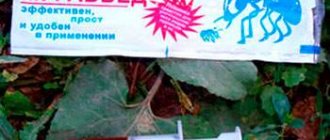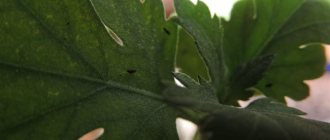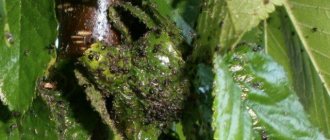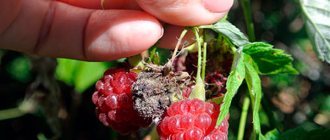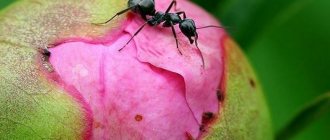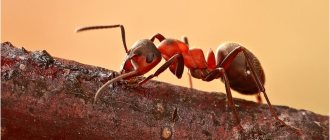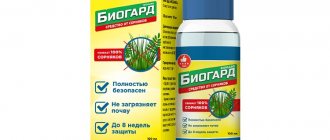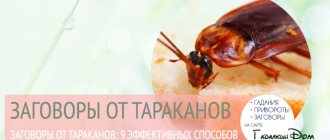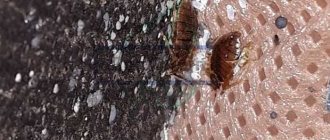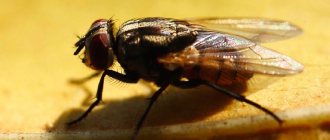Fruit trees are affected by numerous types of pests. Some affect wood, others leaves, and others not only the ovary, but also the fruits. Aphids are small insects that belong to the piercing-sucking insects. They can be winged or wingless. In early spring, larvae emerge from the eggs and begin to intensively suck the juice from young shoots and leaves.
The fact that the cherry tree is affected by this pest can be seen by twisted, crumpled leaves and blackened sprouts. If you look closely, you will notice that aphid colonies give them this color. The seemingly harmless insect weakens the plant. And the yield will accordingly be lower than expected. Aphids can also cause viral and fungal diseases.
Therefore, starting from an early stage of spread, it is necessary to begin a comprehensive fight against this pest. How best to do this, which methods are more effective, we will tell you in this article.
Causes of aphids
Cherry aphids exist in the form of: larvae, wingless, winged, heterosexual individuals.
Over the summer, aphids produce several generations. There is an overpopulation of the living space by aphids, and in the fall many winged females are born, which fly long distances in order to capture new places to create colonies. If a colony of aphids that has invaded trees in a garden plot is not removed during the summer, they will lay overwintering larvae on young shoots near the buds, and in the spring they will begin to multiply with renewed vigor, capturing new trees, bushes and herbaceous plants (cucumbers, tomatoes, peppers).
What is cherry aphid
Cherry aphid is a pest of stone fruit crops. It overwinters in the egg stage at the base of the buds. In early spring, the founding aphid develops from the egg. During its existence, it is capable of producing more than a hundred larvae, which in turn form about a dozen colonies throughout the plant. The first generations of black aphids on cherries do not have wings.
Wingless insects inhabit the tops of shoots, feeding on the youngest tender leaves, at the same time destroying the main growth points on the branches of the tree. In the second half of summer, winged individuals appear and move to new plants, the so-called secondary hosts. For cherry aphids this is speedwell, eyebright, and bedstraw. The autumn generation of the pest also has wings. Winged individuals fly back to cherries and lay eggs near the buds. In general, more than a dozen generations of aphids develop during the season.
Aphid eggs have a characteristic black color. Adults can be either black or black-green. The larvae are lighter in color. Depending on the time of birth, the size of cherry aphids varies. In the first half of summer, individuals with a body size of up to 2.2-2.4 mm predominate. Autumn insects are smaller: body length reaches 1.4-1.7 mm.
Black aphid on a cherry
Why are black aphids dangerous on cherries?
This insect poses the greatest danger to young trees. A large number of pests can destroy the plant. Tender leaves, the juice of which insects feed on, curl and dry out. Sometimes the aphid eats more than half of the leaf. Naturally, it dries out. Following the leaf blade, part of the annual shoot may also dry out.
The absence of young shoots leads to metabolic disorders in the branches of the seedling, a sharp decrease in photosynthesis processes in the infected part, and, as a result, a severe weakening of the plant. If a young cherry tree manages not to dry out during the summer, there is a very high probability of its death from frost.
For more mature trees, cherry aphids are dangerous because they significantly reduce the number of young shoots, and therefore greatly reduce the yield of future seasons. The effect of the pest is especially noticeable if more than 25% of new leaves are affected.
Cherry aphid
How to deal with black aphids on cherries and cherries
Control measures for aphids inhabiting stone fruit trees are similar to control measures for any other aphid. Repeated treatment with targeted insecticides is effective. Trees need to be sprayed thoroughly, applying the solution to both sides of the leaf blades. The garden is first cultivated in early spring, at the time the leaves extend. After flowering, the prevention is repeated.
To boost immunity, young trees must be foliar-fed with microelements and an NPK complex, and also watered well throughout the season.
To reduce the risk of cherry aphids infecting garden trees, it is advisable to weed their tree trunks. If this area is mulched, you need to ensure that ants do not settle near the plantings.
Description of black aphids
Aphids are insects from the genus Hemiptera. Cherries, plums and other stone fruits are attacked by black aphids. These are small creatures that reach a size of no more than a couple of millimeters. The body shape of an insect is always different.
Aphids can be both wingless and winged. The wingless type of insect does not leave its habitat and constantly reproduces there. One individual insect can produce 4-5 generations of offspring within a couple of months. The number of individuals reaches several hundred thousand, which constantly reproduce. In summer, 10-12 generations can be born.
Aphids are attracted to cherries by their juice. They extract it from the plant by piercing the surface of the shoots with their proboscis. Aphids prefer the juiciest plants for food; it is easier to get food from them. Black aphids infect the bases of leaves and tops of shoots.
The winged subspecies spreads aphids to other plants. It is not born in every generation, but only when the colony becomes too large for one plant. Also, winged aphids appear during cold weather and other unfavorable conditions.
During feeding, aphids secrete sweet honeydew, which attracts other garden insects. Bees use honeydew to create honeydew honey. The main lovers of the sweet substance are ants. They become a kind of protectors of aphids. Ants protect aphids from other insects and transfer them to other plants.
Damage from black aphids on cherries
The action of the pest leads to the following negative consequences:
• infestation by aphids can lead to the death of the tree; • plants have an increased chance of being infected by various viruses; • yields are significantly reduced; • berries become small and ugly; • the possibility of infection of all neighboring plants.
Black aphids can infect currants, gooseberries, raspberries and other neighboring plants. The insect can also harm plums, apricots and other stone fruits. The pest feeds on plant sap, which disrupts the flow of nutrients into the leaves. They dry out and curl, and the affected surface turns black.
There is a risk of getting infected from black aphids. Various fungal diseases can develop on the shoots. Along with insect saliva, various microorganisms enter the cells. Sooty fungus can lead to crop loss, and if the tree is not cured before winter, it will die.
We determine the damage to plantings by this pest
Several varieties of such insect pests have become widespread, often settling on shrubs and fruit trees. Aphids may differ in size and appearance, but all their varieties exhibit the same behavior.
Insect colonies are localized on the back side of young leaves and at the base of annual shoots on cherry trees. Aphids do not tolerate the sun well, so they try to stay in the shade, under young leaves. This insect feeds on plant sap, and the easiest way to get such food is from young leaves and stems of cherries.
If this pest multiplies uncontrollably on a cherry tree, the affected foliage quickly curls, does not participate in photosynthesis, and soon withers. Cherry berries also soon fall from the trees.
Black cherry aphids are most often observed on cherries and other stone fruit crops. These insects multiply quickly, so the gardener needs to take appropriate measures at the first signs of the appearance of such pests in the garden.
In just a matter of days, all young foliage, berries and shoots can be strewn with black microscopic swarming dots. Determining the presence of such pests on cherry trees is not difficult. It is necessary to inspect the foliage for the presence of small black insects that live in colonies on the back of the foliage.
An indirect sign of the presence of this pest on a cherry tree is a large number of ants constantly scurrying along the branches. Ants on cherries feed on the milk of aphids and are even able to reproduce and maintain their colonies of such insects in a viable state. That is why this problem should be dealt with comprehensively, destroying both the ants and the aphids themselves.
Signs of aphid damage to a tree
Thousands of species of aphids are known. The black cherry aphid, in addition to cherries, affects stone fruit trees: plum, apricot, peach. The first sign of a cherry being captured by aphids is the appearance of shine on young shoots, buds, and blossoming leaves - this is the sweet honeydew that aphids secrete as a result of their vital activity. Aphids do not eat leaves, they only suck out the juice. The leaves, losing moisture, curl up and dry out, and the aphids move to other leaves.
The appearance of ants on trees is another sign of aphids; ants eat sweet honeydew, they guard aphids and carry them to other trees. Along the paths of ants you can find anthills. Ant control is an essential component in the fight against aphids.
To preserve trees and prevent the spread of aphids throughout the garden, aphids are fought with all available methods and means, without wasting time.
Additional tips and tricks
To make processing easier, many gardeners use one trick. Experienced gardeners purchase a Karcher pump, which simplifies the process. The pump itself is lowered into the container with the filtered solution, and with a hose you can water and spray any plants on the site.
At the same time, liquids that are caustic for aphids are effectively sprayed under high pressure, so you need to maintain a distance that is safe for the leaves. But aphids and their larvae are easily washed away. After the procedure, it is recommended to treat the ground around the tree with any disinfectant, ammonia, for example.
Thus, although the fight against aphids seems to be a difficult task, if you want to drive away uninvited guests, it is not so difficult. The main thing is to choose the right product to combat aphids. Fortunately, there is a huge selection: from folk recipes to harsh chemicals with guaranteed results.
Treating cherries against pests in spring
Cherry pest control should be carried out several times during the fruiting season. Primary treatment of cherries against pests on the site is carried out in early spring, immediately after the snow cover melts. You can read about how, against what and with what cherry is treated against pests in the spring further on this page, where the most common types of insects are listed.
See cherry pests and the fight against them in the photo, which illustrates the main agrotechnical measures:
Brown fruit mite Bryobia redikorzevi Reck . - a small sucking pest 0.5 mm long, brown in color, with four pairs of legs. The eggs are red, spherical. When there are a large number of eggs on the bark, the branches become rusty-red. Eggs overwinter at the base of fruitlets and in the forks of branches. The larvae are bright red, have three pairs of legs, emerge from the eggs in the spring, when the buds open, and begin to feed on the juice of the buds and young leaves. Damaged leaves lighten, become dirty white and do not develop. When there is a large number of mites, massive leaf fall occurs and shoot growth stops, which greatly affects the ripening of wood and the frost resistance of trees. Up to 5 generations of the pest develop per year, which constantly accumulates in the shaded part of the crown.
Control measures. Preventive spraying of trees during bud break with fufanon or its analogues (kemifos, karbofos). If there is a large number of mites, immediately after flowering and in the summer, spraying with the same preparations is carried out. You can also use drugs: Fitoverm, Actellik, Inta-Vir.
Cherry aphid Myzus cerasi F. is a small sucking insect, 2-3 mm long, black, shiny, feeding on the juice on young growing leaves of cherries and cherries. The eggs overwinter at the base of the buds, in the spring the larvae hatch, develop, feed on the sap of the buds, and then leaves and shoots. Leaves curl, shoots become deformed. Several generations of the pest develop over the course of a season. The greatest damage is caused to trees in June-July. In autumn, females lay overwintering eggs near the buds.
What kind of animal is an aphid?
There are many different types of aphids that harm fruit trees. The cherry aphid belongs to the order Homoptera, is a very common species and is found everywhere. During the life cycle, it changes several generations (wingless, winged), and can migrate from cherries to other plants that are secondary hosts.
Females lay eggs, which overwinter on cherry branches, usually at the very base of the buds. When the buds swell in the spring, larvae begin to appear and feed on the sap of the leaves.
Colonies of swarming larvae are not a particularly pleasant sight. If no measures are taken, the leaves and shoots of the cherry tree become literally strewn with black dots. At the same time, there are more of them every day, and the shoots and leaves of the tree wither and curl.
What harm does aphids cause?
Inexperienced gardeners often do not attach much importance to the fight against aphids, considering these insects not so dangerous. But in reality this is not the case, and as soon as you start the process of preventing and destroying aphids, you can lose a healthy fruit tree. The thing is that aphids suck out all the juices from the leaves and shoots of the cherry, first of all, damaging the youngest parts of the plant. Because of this, the growth of leaf veins stops, it begins to curl, and then dries out and dies.
Shoots damaged by aphids become deformed, become twisted and lumpy. This may affect the wintering of the tree, since these are the shoots that are most susceptible to freezing. Also, aphids often move onto cherry fruits, leaving their waste products on them, which reduces the quality and appearance of the berries.
Spraying cherries against pests
Various chemicals are used to spray cherries against pests.
The following shows the most common cherry pests and the fight against them in the photo, the frames of which show the possibilities of modern chemistry.
Cherry weevil, or cherry weevil Rhynchites auratus Scop. , is a beetle up to 10 mm long, bronze-green in color with a golden sheen. The larva is curved, yellowish, with a brown head. Larvae and beetles overwinter in the soil. The beetles come to the surface during cherry blossoms and feed on buds, flowers and fruit ovaries. The weevil most often damages stone fruit crops, but when it appears en masse, it harms all fruit and berry bushes. The beetles gnaw off the ovaries, and later disfigure young leaves and fruits, gnawing holes of various shapes in them. Larval development occurs on stone fruit crops. Females, about two weeks after cherry blossoms, gnaw the fruits and lay eggs on the stone. The hatched larvae bite into the seed and feed on its core. Having finished feeding, the larvae go into the soil, where one part pupates and turns into beetles, and the other goes into diapause and overwinters in the larval stage. Affected fruits dry out.
Control measures . Shaking beetles off trees and destroying them. Spraying fruit trees and berry bushes in the spring before flowering and immediately after flowering with one of the preparations: Fufanon, Kemifos, Kinmiks, Acttellik, Inta-Vir.
Cherry leaf beetle Orsodacne cerasi L. - beetle 4.5-8 mm long, color from yellow to black or black-blue, elytra with dots and inconspicuous hairs. The beetles damage the ovaries and leaves of cherry and rowan trees, causing damage in April-May. The larvae are white, legless, elongated, feed on leaf tissues, mining the leaf blade. When present in large numbers, the leaf beetle causes significant damage to trees.
Control measures. Spraying gardens in the spring, before buds open and immediately after flowering, with fufanon or its analogues (kemifos, karbofos).
The yellow fruit stone sawfly Haplocampa flava L. is an insect 4-5 mm long, with transparent wings, darkened at the base, and with a dark stripe in the middle. The head and chest are brownish-yellow, the metanotum is often black, and the legs are yellow. The abdomen is brown-yellow, black above. Females lay 1-2 eggs on the ovary in gnawed round holes. The larvae develop in the fruit, damaging the seed. In addition to cherries, it harms cherries and plums. When the pest population is high, the fruit yield is sharply reduced.
Control measures. Preventive spraying of gardens in the spring, when buds open and immediately after flowering, with fufanon or its analogues (kemifos, karbofos).
Harm of aphids to cherries
Finding a small insect on a tree is not difficult. The pest is a small bug whose body length is no more than 2.5 mm. Insect larvae are black or dark brown. Aphids always settle on the inside of the leaf, but if the pest is widespread, then it can parasitize any part of the fruit tree.
The peak of aphid activity occurs in mid-spring, when the insect begins to lay eggs on the surface of trees or plants. Later, around the beginning or middle of summer, larvae hatch from the eggs, which cause significant damage to plant crops.
Aphids feed on the juice and pulp of leaves. The leaf affected by the insect gradually dries out and falls off. Aphid colonies can spread to the buds, trunks and fruits of trees. If an insect parasitizes a cherry tree, this can lead to the death of the entire tree.
Why is it dangerous for trees?
This family of insects is quite a nasty pest. Settling on the underside of leaves, aphids suck juices from fresh green plants, destroying young shoots. At the same time, it secretes poison, which causes the leaves to curl, change shape and die, the shoots do not grow, and the tops become bent. Aphid waste - sweet secretions - contaminates the leaves, thereby disrupting the natural life of the plant. She also spreads viral infections through her saliva. Among fruit trees, the greatest damage occurs to young seedlings. Aphids are familiar small insects up to 7 mm. They have a special piercing-sucking proboscis, which they use to pierce the surface of leaves, buds or new shoots and suck out the juice. The plant is greatly weakened and becomes susceptible to viral diseases. Some species of aphids damage plant roots. Aphids come with wings and without wings. Some fly away with the wind up to 25 km, while others reproduce locally 2 times a year, in spring and summer. The excrement excreted by aphids contains a lot of carbohydrates; ants love this special treat.
Ants carry aphid larvae over considerable distances to succulent parts of the plant, protecting them from bad weather even in their anthill. It is ants in symbiosis with larvae, winged and wingless representatives of aphids that can cause great trouble in your garden.
The insects adapted to seasonal changes and studied the physiology of the plant they liked. They reproduce in two ways: the first is natural mating of males and females, and the second method is viviparity of virgin females. Aphids are a dangerous insect and must be combated in spring and autumn. In the fall, females lay eggs that overwinter on trees and shrubs and hatch into wingless females.
Ants carry such wingless creatures from tree to tree. In May, winged females appear, capable of migrating over distances that will give birth to males and females in September. They are fertilized again and this process is endless, which once again proves the complexity of combating this type of pest.
The aphid's diet is enormous; it feeds on fruits on apple, pear, quince, plum, medlar, hawthorn, serviceberry and dogwood trees. It multiplies and therefore harms sunflower, thistle, chamomile, thistle, and comfrey. There are lovers of flower plants - roses, meadowsweet, tulips, black currants, viburnum. There are 450 species of aphids in our hemisphere.
Obviously, without taking special measures to destroy these pests, enormous damage will be caused to the garden and the entire area.
The fight against aphids is further complicated by their rapid reproduction.
In addition to methods of getting rid of aphids, which we will consider later in our article, you need to pay attention to preventive measures
Why do aphids appear and how to prevent their invasion?
It often happens that cherries grow well for many years, without diseases or pests, but in some year aphids settle on them. And not only! Ants are actively scurrying around the tree with her. They are the ones who move the small pest to a new place. This symbiosis is explained by the ants' addiction to copper jelly, which is secreted by aphids. So they carry it all over the garden. In addition to ant transport, aphids can move independently when winged individuals appear during a certain breeding period. Unlike wingless offspring, they are excellent at moving over long distances, especially with the help of the wind.
Photo 1. Black or green aphids settle on the cherry. It is located on the back of the leaves.
Experienced gardeners rightly argue that it is better to prevent a problem than to hope that it will go away on its own. It is better to take care in advance to ensure that the pest does not settle in your garden. To do this, you need to take into account that for the full reproduction and spread of aphids, a certain set of weeds is necessary. For example, most of all she loves bedstraw. Its thickets are the most suitable environment for summer egg laying. The danger is that one viable female can produce three generations of aphids, with a total number of several hundred thousand winged and wingless individuals. By autumn, the pest lays eggs in the axils of the buds, the bends of the shoots, and in fallen leaves for the winter.
In the spring, when the leaves bloom on the cherry tree, at the same time the overwintered aphid eggs turn into larvae. Already at this stage of development, pests feed on fresh plant sap. To prevent their maturation and spread, it is necessary to carry out preventive spraying of trees in a timely manner. This must be done before flowering begins. It is better to use harmless products that will not interfere with budding and ovary formation. In the future, the quality and quantity of berries will depend on this.
To protect cherries from pests and at the same time get a good harvest, experienced gardeners have long used affordable, safe products that do not accumulate in the berries and do not cause harm to humans, animals and the environment. In addition, they are available and inexpensive. Let's tell you more about them.
How to fight aphids on cherries?
Today, gardeners have many ways to protect plants and combat emerging pests. Many people think the easiest way is to use chemicals. But there are more significant limitations here. For example, how to deal with black aphids on cherries if the fruits are already ripening on the tree, and only a few weeks or days remain before harvesting? In addition, irrigating the crown will not defeat the ants, and the cherry aphid will be back in its original place soon after treatment. Therefore, you should not limit yourself to the use of insecticides.
Sticky belts are very effective against insects climbing the trunk to the top of the crown. They are installed in early spring and, with regular renewal of the sticky layer, will help protect the plantings from encroachment by cherry aphids and other equally dangerous pests.
Before treating aphids on cherries, in spring and early summer it is worth walking around the entire area to find all the anthills existing on the territory.
Typically garden ants:
- they build their shelters along the borders of flower beds and garden paths;
- They like to build houses on the remains of cut down, but not uprooted, bushes and trees.
Even a board lying in a sunny, open place can hide the entrance to an underground anthill.
Before getting rid of aphids on cherries, be sure to combat the detected anthills. The easiest way is to lightly stir them and pour boiling water over them. Hot water will not only damage the number of adult insects, but also destroy the eggs.
If the deadline for picking berries is already close, and the gardener does not want to risk their quality, the crown of the cherry can be treated with ordinary water. Strong jets directed at the affected branches easily wash away insects without causing harm to the plant itself and the future harvest.
How to drive away ants
Some other pests are attracted to the smell of honeydew, a sweet substance secreted by aphids. Ants carry aphids and help them spread throughout the garden. Therefore, they live together on mutually beneficial terms.
The simplest and most effective way is to tightly wrap the tree with foil with the reflective side facing out. This deprives them of the ability to crawl along the bark due to insufficient tenacity of the legs to the surface.
Boiling water
Not the most effective method, but it can help with small invasions. The advantage of this method is absolute environmental safety. To get rid of ants, you need to boil a sufficient amount of water, stir up the ant city and generously pour hot liquid on it. You need to repeat the procedure several times. Surviving ants can be driven away with much less insecticide.
Hemp oil
Anti-aphid oil should be generously lubricated at the base of the trees. The components and the fatty base act in a complex manner - they repel ants and prevent them from climbing up the trunk.
Hunting belt
This is the name given to a circle of special products that are generously coated on a tree trunk to stick insects and get rid of ants.
Includes:
- polyisobutylene - a polymer that provides resistance to moisture;
- polybutylene - added for viscosity and plasticity of the composition;
- cycloisan is a catalyst for triggering the action of adhesives.
The fishing belt looks and acts like flypaper and allows you to catch a large number of individuals.
Kerosene
The caustic liquid has an intense and unpleasant odor for aphids.
To get rid of ants you will need a number of steps:
- mix kerosene and 10 liters of hot water;
- stir up the anthill or make several holes;
- pour the prepared mixture into them to the full depth;
- cover with polyethylene or felt material.
After this, the anthill will become uninhabitable, and the ants will quickly leave the place with a hateful smell.
Folk recipes
You can prepare an effective aphid repellent yourself, but regular treatment will be required. Homemade preparations for aphids are quickly washed off by rain and lose their beneficial properties.
You will need to spray the cherries once every week and a half. The first treatment against aphids should be done in early spring, when young leaves and shoots are just beginning to appear on the tree.
The fight against aphids on cherries is successfully carried out using an ash solution. To prepare it, you will need to take 300 grams of sifted substance and a liter of water.
The ash is poured with boiling water and kept on low heat for 30 minutes. The broth is filtered and brought to a volume of ten liters. Foliage and shoots are treated against aphids with a fresh product.
Garlic
Its smell is unpleasant to many pests. For prevention, at the beginning of summer, tree trunks are tied with plant arrows. Garlic infusion, prepared according to the following recipe, can remove aphids:
- chop 100 grams of garlic;
- fill it with ten liters of water;
- leave the product for 48 hours in a dark place.
The product is used to treat young shoots and leaves of the plant.
Dandelion
If there are aphids on cherries and currants, then an infusion of dandelion can destroy them. To prepare it, take 300 grams of flower leaves and chop them finely. The grass is poured with warm water and the product is sent to infuse in a dark place. After two days, the drug is filtered.
Dry mustard
Stir 100 g of mustard powder in a bucket of water. Spray the cherries with the resulting mixture. For better adhesion of mustard to the leaves, you can add soap to the solution.
Milk with iodine
You will need a bottle of iodine and half a glass of milk. The ingredients are diluted in a liter of water and the resulting solution is sprayed on the plants against aphids. Considering the size of the cherry tree, a lot of solution will be needed.
Soda Ash
It is sold in hardware stores as a substitute for kitchen utensils. Experienced gardeners believe that using a soda ash solution is the best way to rid cherries of aphids during the ripening of the crop. Since soda is used for washing dishes, it can be used even on already ripe cherries. The preparation method is also simple: soda is diluted in water. Each gardener has his own proportions. Some use 3 tbsp. l. on a bucket of water. Others believe that porridge cannot be spoiled with oil, and add the same 3 tbsp. l. per liter of water.
All these folk methods allow you to get rid of aphids on cherries in the summer during the ripening of the crop. Until it is possible to use stronger drugs. Plus, folk remedies are safe for human health.
Celandine
Celandine can save a cherry if aphids have settled on it. An infusion is prepared from the weed, which is used to treat the plants.
For ten liters of water take 4 kilograms of fresh celandine. The herb is poured with water and infused in a dark place for at least 2 hours. It is necessary to poison aphids every day.
Iodine
Preparation:
5 ml. Dilute 10% iodine solution in 10 liters. liquids.
Treatment of cherries against pests with iodine is carried out in early and mid-spring
It is allowed to spray fruit trees with an iodine solution before harvesting, but it is important that at least 3 weeks pass after treatment and before harvesting the fruits
Ash solution
Preparation:
- 300 gr. mix the ash powder with a small volume of water (until a liquid-like mass is obtained);
- put the resulting mixture on medium heat and cook for half an hour;
- then cool and add 10 liters to the active mixture. cool water.
The prepared solution is used for spraying cherries. To effectively get rid of aphid colonies, it is necessary to treat fruit trees with an ash solution three times, the interval between sprayings is 10 days.
Onion peel decoction
Preparation:
- Remove the skins from the onions, you need to take 500 grams in total. dry plant materials;
- pour boiling water (10 l.) over the husks;
- leave for 3-4 hours.
The processing of cherries is carried out with a freshly prepared composition; it is not advisable to store a decoction of onion peels, since it acquires a specific aroma over time.
Ammonia
Half a bar of laundry soap is grated and dissolved in hot water. The resulting soap solution is poured into a bucket of water and a 100-ml bottle of 10 percent ammonia is added there.
It is necessary to treat black aphids that have settled on cherries twice with a break of a week. Particular attention is paid to the underside of the leaves.
Tar soap
If you don't have it, you can use regular household cleaners. Tar is more effective because of the smell. Otherwise, there is no difference between the detergents. The recipe is the same as with ammonia, but without the latter.
Tobacco infusion
Preparation:
- 200 gr. tobacco dust mixed with 1 liter. liquids;
- Before use, dilute the tobacco concentrate with cold water (proportional ratio - 1 part concentrate and 3 parts water).
Soap solution
It is added to other infusions and decoctions to improve the adhesion of toxic substances to the leaf or used as an independent remedy. They can process cherries after flowering, when the fruits have begun to form.
To prepare the solution, grate a piece of laundry or tar soap and dissolve it in ten liters of water.
General information about the pest
Black aphids, which most often appear on cherries, are small, dark-colored insects on average 2 mm in length. They, like other species of this pest, feed on sap, which is obtained from the tissues of young shoots, leaves and buds. Aphids especially love the tops of shoots with the most delicate leaves. Thus, insects weaken the plants, the leaves on them curl and do not develop, and if the pests managed to occupy the shoots before flowering, then the flower buds are also affected.
Individuals of aphids begin active activity on cherries early in the spring, with the onset of the first warmth. As soon as the buds begin to bloom, the pests reproduce quickly; they can produce several generations in a season. If immediate action is not taken, aphids can seriously damage the crop.
Methods for controlling insect pests
There are many ways to combat aphids:
- at the initial stages of the appearance of aphids, a mechanical method of control is suitable, using techniques and devices that prevent individuals from spreading throughout the garden: manual collection and disposal of branches and leaves, glue and grass traps;
- the technological method of control includes the use of modern equipment, tools, technical techniques: killing aphids with a strong stream of water, using sprayers, pumps, fumigation with various compounds;
- chemical pest control includes treating trees with various fungicides;
- biological method is the use of biological preparations and natural enemies of pests;
- traditional methods - the use of skills and available means, the bactericidal and phytoncidal properties of surrounding plants, the knowledge accumulated by gardeners over a long time in the fight against insects.
Competent and timely use of any method or set of measures helps get rid of an aphid infestation. How to save a garden from pests, what method to choose to ensure healthy plant maintenance and get a high yield is up to gardeners to decide.
Mechanical
In the initial stages of infestation by aphid larvae and females, young shoots and leaves can be torn off and disposed of.
In the fight against ants (protectors and carriers of aphids), glue garden traps are used, which prevent the movement of ants along the trunk of cherry trees. Traps are sold in specialized stores. Cultivating the soil of garden plots and timely removal of weeds help in the fight against pests and plant diseases.
Grass traps are prepared independently from fresh grass, which is laid out in a bowl with a high side and sprayed with sweet water.
Biological method
Ladybugs, which feed on adult aphids and larvae, will help destroy aphids without the use of toxic drugs. Plants that will help attract ladybugs to garden plots include coriander, lovage, dill, parsley, fennel, and calendula.
Live biomaterial in the form of ladybugs or their larvae can be purchased at pet stores and planted on trees infested with aphids.
The biological agent Fitoverm has a nerve-paralytic effect on adults through the digestive tract; The drug has no effect on larvae. The treatment is carried out according to the instructions, repeatedly, at twilight, preferably in wet weather (after rains). The drug completely decomposes in light within 2-3 days and is not toxic to the environment.
The drug Akarin is identical in its properties and method of administration to the previous drug.
Iskra Bio: 10 ml bottle, prepare the solution according to the instructions. The drug is highly effective; in heat of + 25 C and above, the effectiveness increases. Does not cause addiction among pests. Plants are treated during the period of flowering, setting and ripening of cherries. Description and characteristics of the Tenderness variety of cherries, features of planting and care Read
Technological
Technological processing methods include the use of simple folk technologies and modern advances in technological processes and equipment.
Simple technologies include the elementary method of washing off aphids and their larvae using a powerful stream of water. The land in the area where the crown is washed away is treated with chemicals or folk remedies, after which it is necessary to remove and dispose of all vegetation under the crown of the cherry trees.
Under the trees, pieces of rubber tires are lit in a bucket, which emit acrid smoke - it kills aphids and larvae.
There is modern equipment that forms fine mixtures of cold or hot steam with chemical or biological agents.
There are specialized organizations that carry out disinfection measures, both for individuals and in large nurseries, using new technologies and equipment. They take into account all factors and processing conditions, and skillfully use chemical and biological preparations.
Chemicals
Insecticides are used to kill piercing-sucking insects. Depending on how they affect the insect body, they are divided into several groups:
- Contact. They affect the entire body of the pest.
- Intestinal. Penetrating into the intestines, they poison the parasite.
- System. Once in the body of an aphid, they cause its inevitable death.
- Fumigates. They infect insects by entering through the respiratory system.
Certain groups of these drugs can be used to treat the garden at the stage of bud formation in early spring, and to treat leaves during the growing season. Gardeners consider some of the most effective remedies to be:
- Spark. Used to kill aphids and caterpillars on trees.
- Intavir. Effective against aphids, scale insects, and copperheads.
Trichopolum
This is a drug that is used to treat diseases caused by protozoan microorganisms. When diluted in the correct proportions, it can kill aphids on plants.
Produced in tablet form. The cardboard box contains two blisters, each containing ten tablets.
The drug causes paralysis and affects the cardiovascular system when it enters the body of insects. The duration of action of Trichopolum is until the first rain, until the drug is washed off from the plants. Therefore, the spraying procedure should be repeated in a timely manner.
Aktovit
In the pharmaceutical industry it is produced in bottles of 200 and 40 ml. Also in plastic containers of 900 ml and 4.8 l.
If it gets on an insect or enters the body with eaten leaves, it causes paralysis and leads to death. After treatment, it does not lose its effectiveness for two to three weeks. When the ambient temperature drops below eighteen degrees, efficiency decreases significantly. Actovite is good because insects do not get used to it, so it can be used every year. Actovite does not pollute the environment and is highly soluble in water. This material will tell you about the characteristics and description of the Orange tomato variety.
The drug is low-toxic and does not pose a threat to people. But still, plant processing should be carried out using rubber gloves and a respirator.
It is not recommended to use the drug during flowering plants, as it has a detrimental effect on bees and other pollinators.
Fufanon
Organophosphorus agent. It copes well with aphids and other insects that harm cultivated plants. The drug is a transparent emulsion. Available in five ml ampoules, as well as ten ml bottles. Once on a plant, it is quickly absorbed into its stems, roots and leaves. The action of Fufanon begins within two hours. Causes paralysis of pests, and after a day leads to their death. The effectiveness does not lose within a week. Treatment of currants against ants, like cherries, should be carried out in dry, windless, cloudy weather, preferably in the morning or evening. The drug has a detrimental effect on bees, so its use during flowering is prohibited. Find out about planting and caring for Bessonovsky onions here.
These medications should be used according to the instructions that come with them in the package.
Among the old and proven chemicals, you can use the following:
- 6% Carbolinium solution;
- 1% DNOC solution.
Trees are treated with these drugs only before buds open.
Throughout the summer, cherries can be sprayed with a solution of anabasine sulfate or nicotine sulfate. In case of untimely processing and severe damage to the leaves, use 0.1% metaphos, karbofos, thiophos.
Chemicals for killing aphids
Chemicals are used to get rid of pests instantly. Treatment of fruit trees with chemicals can only be carried out before the flowering period begins. In this case, chemical treatment will not harm the future harvest.
How to process cherries?
"Spark". A popular drug for combating various types of insect pests, including aphids. In addition to fighting insects, the insecticide has a beneficial effect on the tree due to the content of potassium and anti-stress additives in the preparation. The drug is available in the form of tablets, which must be dissolved in water before use (according to the instructions for use). "Commander". The chemical actively destroys both adult insects and their larvae. Treatment with the drug provides the fruit tree with reliable protection from all types of insect pests. “Commander” is available in the form of ampoules, which must be dissolved in water to prepare the active solution (the solution must be prepared strictly according to the recommendations in the instructions)
It is important to note that the drug is a potent agent, so at the same time as killing aphids, it can also kill “beneficial” insects. "Fitoferm". A safe and very effective drug, which includes waste products of various microorganisms
The drug does not pollute the environment; its active components are quickly destroyed in the air. The treatment can be carried out at any period of cherry development. After treatment with Fitoferm, you can harvest the crop within 2-3 days. The drug is available in the form of ampoules; their contents are dissolved in water before use. It is important to spray cherries only in dry and windless weather.
Herbal infusions and decoctions
There must be a “garden pharmacy” on every site or beyond. These are plants that repel aphids and other pests. Gardeners have long known recipes for infusions and decoctions from available wild and garden crops.
Tobacco
The infusion is prepared in this ratio
- 40 g of crushed fresh leaves for every liter of water.
Pour water over the tobacco and leave for two days. Before use, strain the infusion and add water 1:2.
According to another recipe, an infusion can be prepared from dry tobacco dust. You will need half a glass. The powder is poured into a liter of water and boiled for 0.5 hours. The broth is infused for two days in a dark place. After 2 days, you can filter it and add 2 liters of water. At this concentration it is ready for use.
Photo 4. Tobacco dust is a well-known insecticidal agent against aphids and other pests.
Elderberry
Our ancestors planted bushes near the house to repel annoying insects. Modern experts call this plant a natural insecticide. The specific smell of elderberry is not to the liking of ants and aphids. Even if it is not in your garden, you can find it in a forest or park and make an infusion from it:
- Pour 1 kg of young leaves (crushed) into 10 liters of water and leave for 12 hours. To process cherries, the infusion must be strained.
For infusion, you can use dry raw materials. It is prepared from inflorescences and dried in the shade.
To prepare the insecticide, you need 200 g of chamomile per 10 liters of water, leave for 12 hours.
The filtered cake can be filled again, but with a smaller volume of water - 5 liters.
Photo 5. Pyrethrum is sold in garden stores. It is produced in the form of a dry powder.
Morphologically related species
In terms of external characteristics (morphology), Myzus formosanus and Myzus dycei are close to the described species:
- Wingless individuals of Myzus formosanus. The tubes are no longer than the tail and are not curved towards the apex. The abdominal tergites are not sclerotized, sometimes with brown, unevenly distributed spots. The color of the integument is light brown and brownish-red. They develop on knotweed.
- Flightless individuals of Myzus dycei. The tubes are 3–3.5 times longer than the tail, curved outward at the apex. The abdominal tergites are sclerotized, wrinkled, and not covered with spots. The color of the integument is light or yellow-green. They develop on nettles.
Harmless insect repellents
Of course, traditional methods of combating aphids are less effective than industrial ones, but they are also useful if you start acting at an early stage of infection. They save the crop if there are already berries on the tree or you do not want to harm nature and bees.
Onion or garlic solution
- After flowering, use an infusion of onion and garlic; take only 150 g of vegetables per 5 liters of water to prepare the product.
- Carry out treatments every 10 days for 1 month, and you will get rid of uninvited guests.
Pepper and tobacco
Apple and cherry trees can also be treated with an infusion of red pepper with the addition of tobacco dust and wood ash.
- take approximately 250 g of each component,
- dilute in water and bring to a boil,
- and then fill the resulting product with additional water and use it in the garden.
For prevention, infusions of herbs such as celandine, dandelion, and yarrow are more suitable.
Rule 3. Feed the cherries
It is advisable to combine the application of fertilizers in the autumn with watering. This way they will quickly get deeper into the soil to the horse system. It’s great if you have time to feed the cherry at the very beginning of autumn, because later the tree will literally go into hibernation and use fertilizers only in early spring, which, in fact, is also not bad.
What to use as autumn fertilizer? Anything. The main thing is that the fertilizing does not contain nitrogen, which can activate growth processes and reduce the winter hardiness of the plant. If you have compost, you can use it (for trees from 1 to 7 years old - 1.5-2 kg per 1 sq.m of trunk circle, for trees older than 7 years - 2.5-3 kg), mineral fertilizers are also suitable. The ideal option is phosphorus plus potassium (for young trees - 2 tablespoons of superphosphate and 1 tablespoon of potassium chloride per 1 sq.m., for fruit-bearing trees - 3 tablespoons of superphosphate and 1.5 tablespoons of potassium chloride ).
You can’t get a rich harvest without proper fertilizing
How to properly treat cherries for aphids
To properly process cherries, you need to follow some rules. This includes not only choosing a drug depending on the season, but also checking the weather forecast and observing safety precautions.
When can you treat cherries for aphids?
The first time cherries are processed is in the spring, when the snow has not yet completely melted. Choose oil-based insecticides to prevent the larvae from hatching from the eggs. Such preparations are poorly washed off with water and can last a long time until the snow melts and frosts with frost are possible.
Chemical insecticides can also be used during cherry blossom season. At this time, it is better to use long-acting systemic drugs.
After the berries appear, chemical insecticides can be used while the cherries are still green. After the fruits turn red, it is more advisable to switch to biological products, and shortly before harvesting, use folk remedies. The latter will have to be applied weekly until the harvest is harvested.
After picking the cherries, closer to autumn, you can again switch to systemic insecticides. There is no point in using anything like this in late autumn. You just need to clear the trees of pieces of old bark and carry out the usual autumn procedures.
Personal protective measures
When processing cherries with folk remedies, no special protection is required, since all these substances are in the kitchen of any housewife. But when spraying trees with chemical insecticides, especially karbofos, protection is already necessary. Today it is not difficult to buy a full chemical protection suit.
Attention! Work with karbofos should only be carried out in such clothing.
Other insecticides do not require such powerful protection, but the required minimum is a respiratory mask, goggles and gloves. However, cypermethrins are moderately toxic to mammals.
This “form of clothing” is acceptable when spraying cherries with folk remedies, but is completely unsuitable when working with industrial insecticides
Processing rules
Cherries should be processed in dry weather, after checking the weather forecast. It is necessary that there is no rain in the next 3 days. Otherwise, the insecticides will be washed away with water. Time of day for processing: early morning or evening. At this time, flying aphids can no longer rise into the air and will also fall under the action of the insecticide.
The dosage of industrial preparations is indicated on the packaging. Depending on the type of insecticide, both the dosage and frequency of treatment may vary. Folk remedies do not have strict dosage standards, and the frequency is no less than once a week.
How to process correctly
It is advisable to apply the products with a garden sprayer so that the liquid completely wets the entire crown on all sides of the leaves. To protect your body and eyes, use wide goggles and thick clothing. The preparations should be sprayed towards the wind.
During the flowering period
The start of work should occur at a time when the snow melts and the air temperature reaches +5°C. At this time, the buds are just beginning to wake up, and there is still a small margin of time before flowering. During the flowering period, it is better to postpone any work to exterminate parasites. Otherwise, you can disrupt the process and end up without a harvest.
During fruiting
During the period of intensive fruit growth, it is also advisable to postpone work on exterminating aphids. Moreover, at this time, berries and fruits accumulate a lot of liquid; if there are toxic chemicals in the tree sap, they will inevitably penetrate into the fruits. Or you need to use only the safe methods listed above.
After harvest
There are no restrictions during this period. Before preparing for wintering, you need to remove too long and old branches along with aphids and burn them. At the same time, you can treat the trees with the most powerful and long-circulating substances. They will ensure the complete destruction of the colony. And next spring, a healthy tree will quickly increase its vegetative mass and continue to bloom vigorously.
Prevention measures
Experienced gardeners know that if you pay due attention to prevention, then the question is: “How to get rid of aphids on cherries?” will lose its relevance over time. Insects will have almost no opportunity to take over a garden in which:
- Regular pruning of damaged branches is carried out;
- weeds, fallen leaves and other plant debris are destroyed;
- the gardener treats plants for fungal and bacterial infections;
- the trees are healthy and do not lack moisture and nutrition;
- The planting trunks are whitewashed and protected from frost in winter.
In this case, it is necessary to observe the measure when applying nitrogen fertilizers. Their excess leads to increased formation of green mass, which attracts cherry aphids and other sucking and leaf-eating pests.
Preventive measures
Every gardener knows that preventing pests is easier than getting rid of them. In autumn and spring, it is necessary to whiten the trunks of all trees in the garden, peeling off the old bark to a healthy place. This will prevent the adult aphids from laying eggs. It is useful to attract beneficial insects to the garden: ladybirds and hoverflies. To do this, spicy herbs are planted around the trees in which the insect overwinters. It is necessary to regularly destroy anthills by pouring boiling water over the passages. Prevent ants from spreading to trees. For this purpose, hunting belts are used, which are used to wrap the trunks.
Remember that treatments against black aphids using any chemicals should be completed two to three weeks before harvest. Treat pest control responsibly, and the results will not be long in coming.
conclusions
Different varieties of cherries, such as Miracle, Shubinka, are attacked by many different pests. One of the insects that harm cherry trees is aphids. The most effective methods of combating it are chemical agents:
- Carbolinium solution.
- DNOC.
- Metaphos.
- Karbofos.
- Anabasine sulfate, nicotine sulfate and others.
Biological methods of controlling aphids are also often used. Beneficial insects that eat harmful ones help with this:
- Sunny (five-spotted ladybug).
- Lacewing.
- Trichogramma.
To ensure that the products in the garden are environmentally friendly, gardeners often use various folk remedies to destroy and prevent the appearance of aphids on cherry trees.
Sources
- https://DachaMechty.ru/vishnya/14-tlya-kak-izbavitsya.html
- https://tlia.ru/kak-borotsya-s-tlyoj-na-vishne/
- https://babushkinadacha.ru/bolezni-i-vrediteli/vrediteli-chereshni-i-vishni-mery-borby-s-nimi.html
- https://KomnatnieCveti.ru/yagody/vishnevaya-tlya-2.html
- https://glav-dacha.ru/kak-izbavitsya-ot-tli-na-vishne/
- https://KinzaRostov.ru/yagody/vishnevaya-tlya-2.html
- https://fermilon.ru/sad-i-ogorod/vrediteli/tlya-na-vishne-narodnye-sredstva-i-preparaty-dlya-borby-s-vreditelem.html
- https://PchelkinaStrana.ru/sad/chernaya-tlya-na-vishne.html
- https://PoFerme.com/sad/derevya/vishni/bol-vish/sposoby-borby-s-tlej.html
[collapse]
Other spring activities you can do with cherries in the garden
Graft
Of course, in the spring you can start grafting cherries, and almost all methods are suitable for this (except for budding - it is grafted in the summer): copulation, in a split, behind the bark, in a side cut or with a bridge.
Planting new seedlings and replanting old ones to another location
As you know, cherries, like sour cherries, are self-sterile crops
in other words, they
require cross-pollination
. Therefore, if you only have 1 tree in your garden, then you need to plant at least 1 more nearby, and preferably 2 different varieties (the same varieties are not suitable for pollination).
Video: how to properly plant and care for cherries
https://youtube.com/watch?v=mB83bSck0po
Well, now you know what kind of care cherries require in the spring in order to always have a harvest and enjoy delicious berries every summer. Good luck!
